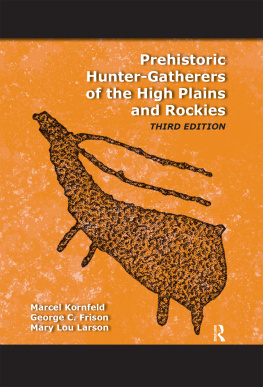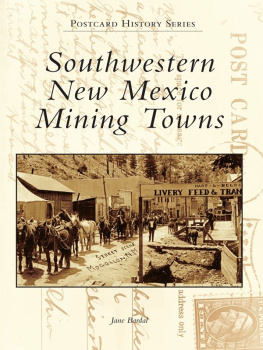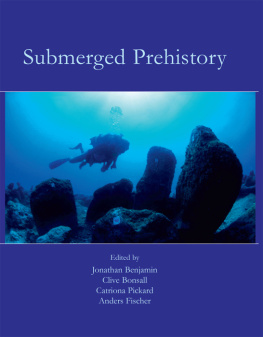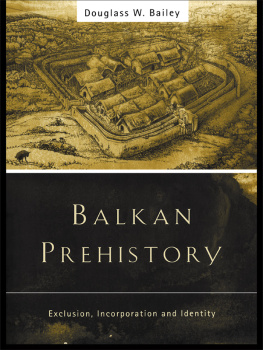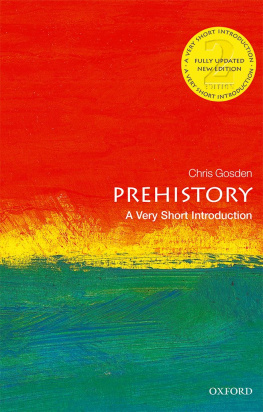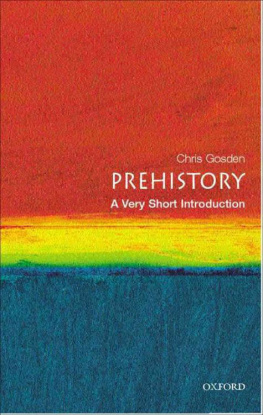Perspectives on Southwestern Prehistory
Investigations in American Archaeology
Paul Minnis, Series Editor
Patricia A. Gilman, Regional Editor, Southwest
Perspectives on Southwestern Prehistory, edited by Paul E. Minnis and Charles L. Redman
A Theory of Northern Athapaskan Prehistory, John W. Ives
Eastern Paleoindian Lithic Resource Use, edited by Christopher J. Ellis and Jonathan C. Lothrop
The Sociopolitical Structure of Prehistoric Southwestern Societies, edited by Steadman Upham, Kent G. Lightfoot, and Roberta A. Jewett
The Hopewell Site: A Contemporary Analysis Based on the Work of Charles C. Willoughby, N'omi B. Greber and Katharine C. Ruhl
Prehistoric Obsidian Exchange in Social Context: A California Study, Thomas L. Johnson
Perspectives on Southwestern Prehistory
Edited by
Paul E. Minnis
and Charles L. Redman
First published 1990 by Westview Press, Inc.
Published 2019 by Routledge
52 Vanderbilt Avenue, New York, NY 10017
2 Park Square, Milton Park, Abingdon, Oxon OX14 4RN
Routledge is an imprint of the Taylor & Francis Group, an informa business
Copyright 1990 Taylor & Francis
All rights reserved. No part of this book may be reprinted or reproduced or utilised in any form or by any electronic, mechanical, or other means, now known or hereafter invented, including photocopying and recording, or in any information storage or retrieval system, without permission in writing from the publishers.
Notice:
Product or corporate names may be trademarks or registered trademarks, and are used only for identification and explanation without intent to infringe.
Library of Congress Cataloging-in-Publication Data
Perspectives on Southwestern prehistory / edited by Paul E. Minnis and Charles L. Redman.
p. cm. (Investigations in American archaeology)
Includes bibliographical references and index.
ISBN 0-8133-7930-X
1. Indians of North AmericaSouthwest, NewHistory. 2. Indians of North AmericaSouthwest, NewAntiquities. 3. Southwest, NewAntiquities. I. Minnis, Paul E. II. Redman, Charles L. III. Series.
E78.S7P46 1990
979'.01dc20
90-38732
CIP
ISBN 13: 978-0-813-37930-2 (hbk)
Contents
, Paul E. Minnis and Charles L. Redman
Section I.
Hunters and Gatherers
, Katherine A. Spielmann
, John D. Speth
, Frank E. Bayham and Donald H. Morris
, Maria Elisa Villalpando C.
, William J. Parry and F.E. Smiley
, Bradley J. Vierra
Section II.
Transitions to Sedentism
, Michael E. Whalen and Patricia A. Gilman
, Suzanne K. Fish, Paul R. Fish, and John Madsen
, Shirley Powell
, Sarah H. Schlanger
, David L. Carmichael
, Robert J. Hard
, Margaret C. Nelson
, Ben A. Nelson
Section III
Elites and Regional Systems
, Randall H. McGuire
, Beatriz Braniff C.
, J. Jefferson Reid and Stephanie M. Whittlesey
, Janet D. Orcutt, Eric Blinman, and Timothy A. Kohler
, R.A. Pailes
Section IV
Protohistoric Period: Transitions to History
, William H. Doelle
, Carroll L. Riley
, William H. Doelle and Henry D. Wallace
, Keith W. Kintigh
, Daniel T. Reff
, David H. Snow
, Henry F. Dobyns
, David R. Wilcox
Section V.
History of Southwestern Archaeology
, J. Jefferson Reid
, W.H. Wills
, Stephen H. Lekson
, Andrew L. Christenson
, Christian E. Downum
Guide
The Current Context of Southwestern Prehistory
Paul E. Minnis Charles L. Redman
Since serious archaeological investigations began over 100 years ago, the Southwest has been among the most actively studied areas in the world. Southwestern archaeology has produced great museums, monumental national parks, and has helped provide the basis for North Americans' understanding of their prehistoric predecessors. Equal to the greatness of the material discoveries in the Southwest, however, has been the long tradition of experimenting with new research methods and pioneering efforts to better understand past human behavior.
Because of the intensity of research in the Southwest, investigators cannot be satisfied with standard approaches and predictable results. Filling the gaps in chronological charts or uncovering well-preserved examples of past societies are insufficient. In order for something to be acknowledged as a notable contribution to the discipline, it must include innovative approaches or novel ideas about the past or both. Southwestern archaeology is seen as taking a leadership role for the broader field of archaeology, being a focus for experimentation, debate, and intense activity.
The scale and intensity of southwestern archaeology has increased dramatically in the past quarter-century, and early southwestern archaeologists might not recognize the enterprise today. Palynology, non-site methodologies, microchip-based mapping equipment, carbon isotope ratios, positive feedback loops, and Neo-Marxian paradigms would all, we presume, seem unfamiliar to them. Perhaps the most incomprehensible change would be the sheer size of southwestern archaeology. A little over half a century ago, a small group representing the majority of the prehistorians working in the Southwest of the United States accepted an invitation to meet with A.V. Kidder at Pecos Pueblo. There they met, and between good fellowship, food, and drink, they formulated a tentative classification for the Southwest. Those were the days. Today, the Pecos Conferences and more area specific meetings regularly draw several hundred participants and only include a fraction of today's active professionals.
Since the original Pecos Conference, we have gained an appreciation of the astonishing variation in southwestern prehistory. Yet, there has been a cost to this expansion. Greater specialization and more parochial perspectives in southwestern archaeology have resulted in a fragmentation of the community of scholars. Our knowledge of the whole Southwest is too often just the sum of a fraction of its parts. Many early southwestern archaeologists worked throughout the region. A.V. Kidder, for example, not only worked at Pecos but also participated in the excavation of a Casas Grandes-like site in extreme southwestern New Mexico before moving on to Mesoamerica. Emil Haury, likewise, has conducted research in nearly every area of the Southwest. It is now common, however, for a southwestern archaeologist to spend an entire career studying the prehistory of a specific area. And unfortunately Norteamericanos can, without much question or guilt, synthetically discuss southwestern archaeology and still ignore the Other Southwest, the southern half of the "Southwest" in northwestern Mexico. Needless to say, the term "Southwest" itself reflects a politico-centric perspective.
There are two major reasons for southwestern archaeologists to once again broaden their horizons to include the entire region. First, as was recognized early on and now is being re-emphasized, prehistoric populations throughout the Southwest interacted. Trade in goods, such as various minerals, macaws, ceramics, and cotton among other items, moved throughout the Southwest. Even if this pan-regional exchange was only a fraction of that recorded ethnohistorically, the importance of this exchange was significant. Similarly, prehistoric organizational changes in one area may well have stimulated changes in others. And the well-documented pattern of region-wide environmental perturbations surely affected groups throughout the Southwest.


